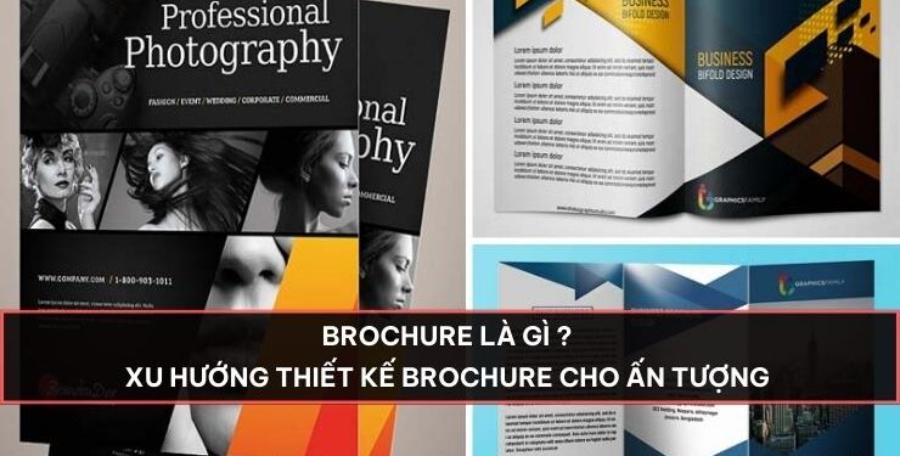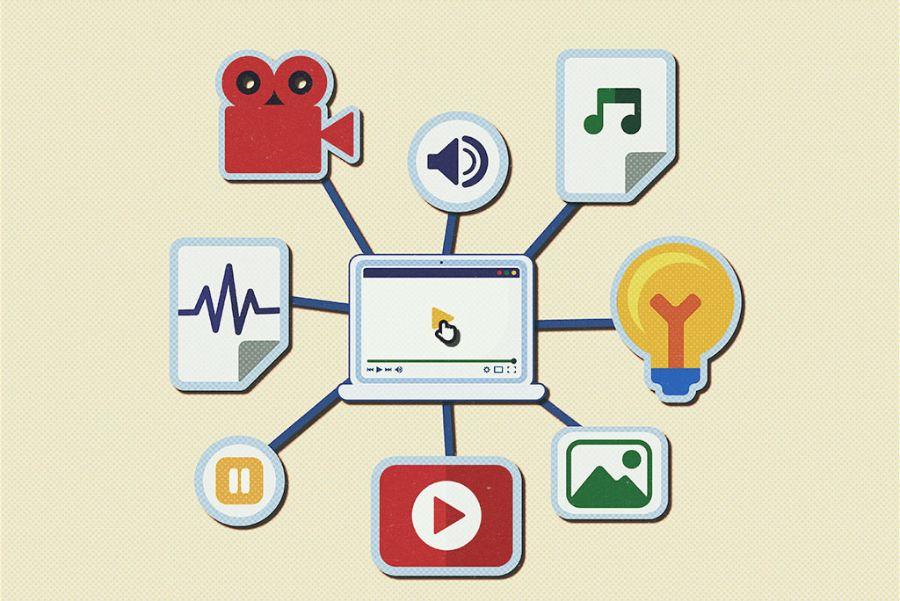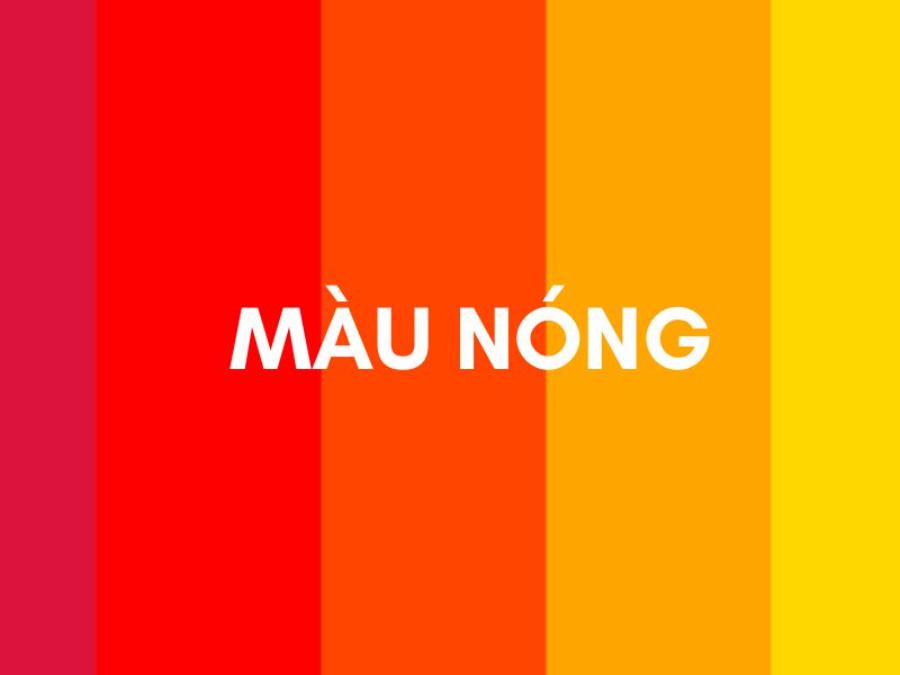Best Selling Products
What is a brochure? A guide to designing a convincing and effective brochure
Learn what a brochure is, common types of brochures, and instructions for designing standard, impressive, and effective brochures for brand communication. Don't miss these extremely important notes!

Brochures are not only a communication tool but also a brand face when approaching customers. With the right design, brochures can significantly increase the level of trust, conversion and consumer engagement with a product or service. Understanding what a brochure is, its role in marketing and important notes when designing will help businesses optimize communication effectiveness with this seemingly small publication. Let's find out more details with sadesign below.
1. What is a brochure?
A brochure is a printed or digital publication used to introduce a product, service, program or brand to consumers. Usually in the form of a multi-page leaflet (2, 3 or 4), a brochure is often accompanied by vivid visual images, concise, easy-to-understand content and clear communication orientation.
(1).jpg)
Unlike posters or flyers that only convey a single message, brochures are often invested more in both content and form to provide more detailed information. This is the bridge between businesses and customers, helping viewers understand the brand more deeply, thereby increasing the ability to make a purchase decision or contact.
1.1 Detailed definition of Brochure
A brochure is a printed or printed brochure containing detailed information about a product, service, event or brand of a business or organization. Brochures are usually designed to be visually appealing, with images, graphics and text presented in a logical and easy-to-understand manner, with the aim of attracting attention, providing information and persuading the reader to take a specific action.
1.2 History of formation and development of Brochure
Although there is no specific timeline that marks the birth of the brochure in its modern form, its predecessor can be found in leaflets and printed advertisements that appeared very early after the advent of printing technology. By the 19th and 20th centuries, with the development of the printing industry and the increasing need for promotion, brochures gradually became a popular marketing tool and were designed more and more professionally. Today, with the development of technology, brochures not only exist in printed form but also have electronic versions (e-brochures) optimized for digital devices and search engines.
2. Popular types of Brochures today
Brochures come in many different shapes and sizes, depending on their intended use and the amount of information they need to convey. Here are some common types of brochures:
Leaflet/Flyer: Usually small in size, printed on one or two sides of paper, used to convey brief, quick information in events, promotions or distributed in public places.
Bi-fold Brochure: Printed on one sheet of paper and folded in half, creating four pages. This type of brochure is suitable for presenting more detailed information than a flyer, often used to introduce a company, product or service in general.
Tri-fold Brochure: Printed on one sheet of paper and folded into three, creating six pages. With more space, tri-fold brochures are often used to present information in sections, which can be divided into introduction, products/services, and contact information. This is one of the most popular types of brochures.
Multi-page brochure (Booklet/Catalogue): Has the form of a small book, with many pages stapled or bound with a spring. This type of brochure is suitable for introducing details about many products/services, often used in industries such as tourism, real estate or introducing industrial products.
3. The role of Brochure in Marketing strategy
A brochure is more than just an informational publication. When properly designed and implemented, it can add tremendous value to your brand communications:
(1).jpg)
3.1. Provide professional information
The brochure space allows businesses to fully present the elements: product description, features, benefits, contact information and brand values. When readers hold a brochure with well-invested content, they tend to appreciate the professionalism and prestige of the business.
3.2. Increase brand awareness
The presence of elements such as logos, color schemes, fonts, and distinctive images helps brochures become effective branding tools. When these elements are deployed consistently with other channels such as websites, packaging, and advertising, businesses will build a professional and trustworthy image.
3.3 Persuading and converting customers
Brochures can motivate purchases if they are properly guided by content. Logical layouts, attractive images, and clear calls to action will stimulate further customer behavior such as calling, emailing, or placing an order.
3.4. Suitable for many forms of distribution
From trade shows, events, exhibitions to receptions, showrooms or even via email, brochures can be effective. The high mobility of brochures makes them flexible in many traditional and modern marketing campaigns.
4. Key elements for brochure design
To make a brochure not only beautiful but also effective in reaching customers and optimizing for search engines (for electronic versions), it is necessary to pay attention to many different factors:
(1).jpg)
4.1 Keyword research and SEO content optimization
The Importance of Keyword Research in Brochure Design: Similar to website optimization, keyword research plays a key role in ensuring that your e-brochure can be found by people searching for relevant information on search engines like Google. Identifying and using the right keywords will help increase visibility and attract quality traffic.
How to identify target keywords related to your product/service:
Brainstorming: List all the words and phrases that potential customers might use when searching for your product or service.
Competitor Analysis: Look at the keywords your competitors are using in their website content and online marketing materials.
Use keyword research tools: Tools like Google Keyword Planner, Ahrefs, SEMrush... can help you discover related keywords, estimate their search volume and competition.
Long-tail keyword research: Focus on longer, more specific keyword phrases, which often have lower search volumes but higher conversion rates because they target people with specific needs.
Incorporate keywords naturally and logically into titles, body copy, and image captions: Once you've identified your target keywords, integrate them naturally and logically into key sections of your e-brochure, including:
Title: The title of the brochure (and page title if it is an e-brochure) should contain the main keyword in an attractive and concise way.
Body text: Use relevant keywords and keyword phrases naturally throughout the content, ensuring that the text flows and is easy to read. Avoid forced keyword stuffing.
Image alt text: Describe the image in short text and include relevant keywords. This helps search engines understand the content of the image and improves visibility.
Create valuable content that provides useful information to readers: While optimizing for SEO is important, your brochure content should still put the reader first. Provide detailed, accurate, and useful information about your product, service, or brand. Solve problems or meet the needs of potential customers. Quality content will keep readers engaged and increase conversions.
Ensure consistency in message and tone: The message and tone of your brochure should be consistent with your brand image and other marketing materials. This helps build strong brand recognition and instills trust in your customers.
4.2 Build a logical and attractive content structure
Clear, easy-to-read and easy-to-follow layout: Arrange information logically and scientifically. Use white space appropriately to create ventilation and help readers easily absorb information. Divide content into clear sections with headings and subheadings.
Use attention-grabbing headlines and subheadings: Headings and subheadings play an important role in grabbing the reader’s attention and helping them quickly grasp the main content of each section. Use strong, suggestive language and include important keywords.
Break content into short, concise paragraphs: Avoid writing paragraphs that are too long, causing boredom and difficulty reading. Break information into short, concise paragraphs that focus on one main idea.
Use bullet points and numbers to highlight important information: Bullet points and numbers make it easy for readers to scan and grasp key points, benefits, or important features.
Present information in order of priority, from overview to detail: Start with an overview of the product/service or brand, then delve into specific details. This gives the reader an overview before exploring more detailed information.
Make a splash with quotes, impressive statistics: Use quotes from satisfied customers, impressive statistics or awards won to add persuasiveness and build trust.
4.3 Intuitive and professional image design
(2).jpg)
Choose high-quality images and graphics that match your content and brand: Images and graphics play an important role in attracting attention and conveying your message visually. Use sharp, high-resolution images that match your brand style.
Ensure aesthetics, harmony in color and layout: The overall design of the brochure needs to be harmonious in color, layout and typography. Create a visually appealing and easy-to-read publication.
Use original or copyrighted images to avoid legal issues: Always use images you take yourself, design yourself, or purchase from reputable sources to avoid copyright issues.
Optimize image size for loading speed (especially for e-brochures): Images that are too large can slow down the loading speed of your e-brochure, affecting user experience and SEO. Optimize image size while ensuring display quality.
Clear image captions and relevant keywords: For electronic versions, adding captions (alt text) to images not only helps users when the image is not displayed, but also provides information to search engines, helping to improve SEO.
4.4 Choose colors and fonts that match your brand
Color: Color has the ability to evoke emotions and create a strong impression. Choose colors that align with your brand identity and the message you want to convey. Consider the psychological meaning of color for your target audience.
Fonts: Choose fonts that are easy to read and appropriate to the design style and target audience. Be consistent in the use of fonts for headings, body copy, and other elements. Avoid using too many different fonts on the same brochure.
Ensure consistency in the use of colors and fonts throughout the brochure: Consistency helps create a professional publication and reinforces brand recognition.
5. Effective brochure content structure
To design a quality brochure, the content needs to be built strategically. Here are the important parts that cannot be missed:
5.1. Attractive title
The headline is the first thing a reader sees. A clear, concise, and compelling headline will grab attention immediately.
5.2. Business/industry introduction
The opening paragraph should provide a brief overview of the business or product. It should demonstrate the brand's professionalism, trustworthiness, and problem-solving capabilities.
(1).jpg)
5.3. Benefits for customers
Consumers don’t care how good a business is if it doesn’t directly benefit them. So, be specific about your strengths, outstanding features, and differences to help customers make quick decisions.
5.4. Illustration
High-quality images that show real products, processes, teams, or customers are essential. Images are a powerful trust tool.
5.5. Call to Action (CTA)
Every brochure should have a clear call to action: “Contact us today”, “Visit our website for more details”, “Book a free consultation”. The clearer the CTA, the higher the conversion rate.
6. Important notes when designing brochures
To own a brochure that is not only beautiful but also effective, it is necessary to ensure the following factors:
6.1. Define clear goals
The purpose will determine the structure, content and design style. Answer: What is the brochure for? Introduce a new service? Increase brand awareness? Send with products? Hand out at a trade show?
6.2. Understand your target audience
The choice of colors, language, and imagery should be guided by the customer group the business wants to reach. Designing for students will be completely different from designing for business executives.
6.3. Tight layout, easy to follow
Information should be divided into clear groups: introduction, products/services, price list, contact information. Avoid putting too much text on one page, which can overwhelm the viewer.
6.4. Design in sync with brand identity system
Colors, fonts, icons, and layout should be consistent across your brand’s other channels. This increases memorability and professionalism.
6.5. Invest in quality images
Avoid blurry, pixelated, or generic stock photos. If necessary, use a product photography service or custom illustration.
7. Conclusion
Brochures are powerful marketing tools if built with a clear strategy and the right design. From defining goals, choosing content, processing images to optimizing print materials and
digital versions – every detail needs to be carefully invested. In an increasingly competitive media landscape, an impressive brochure is the ticket to bring the brand closer to the hearts of customers.












































